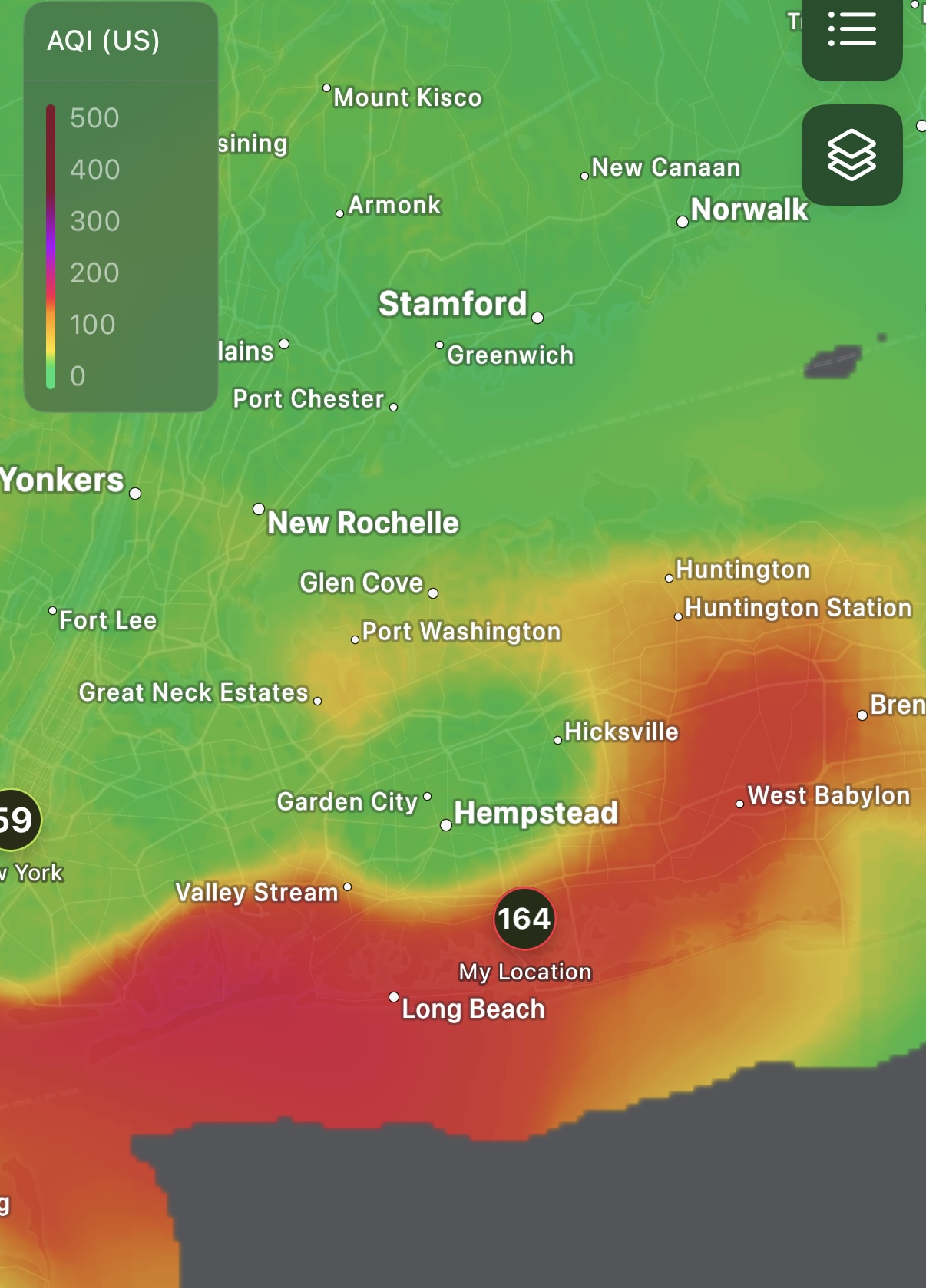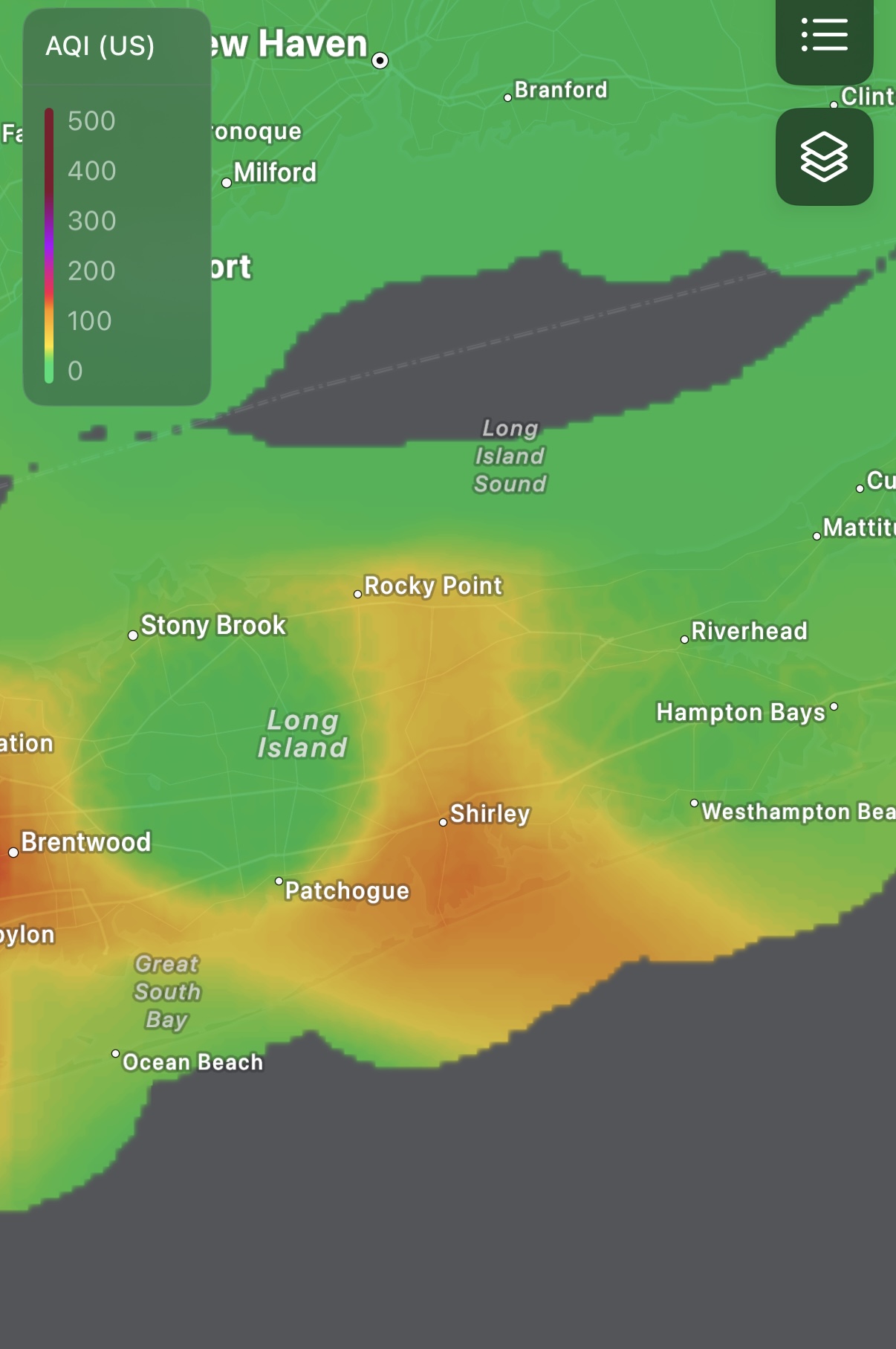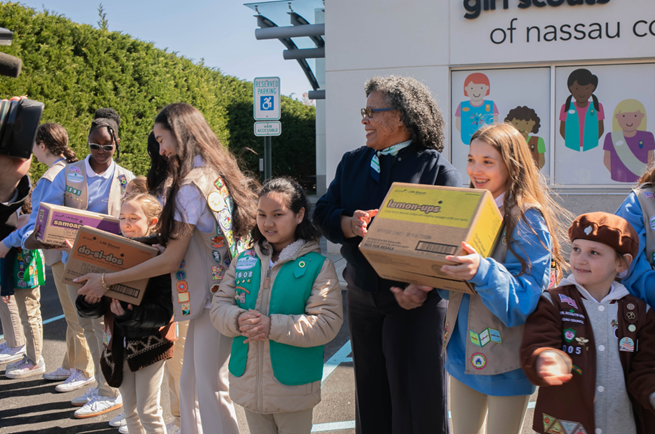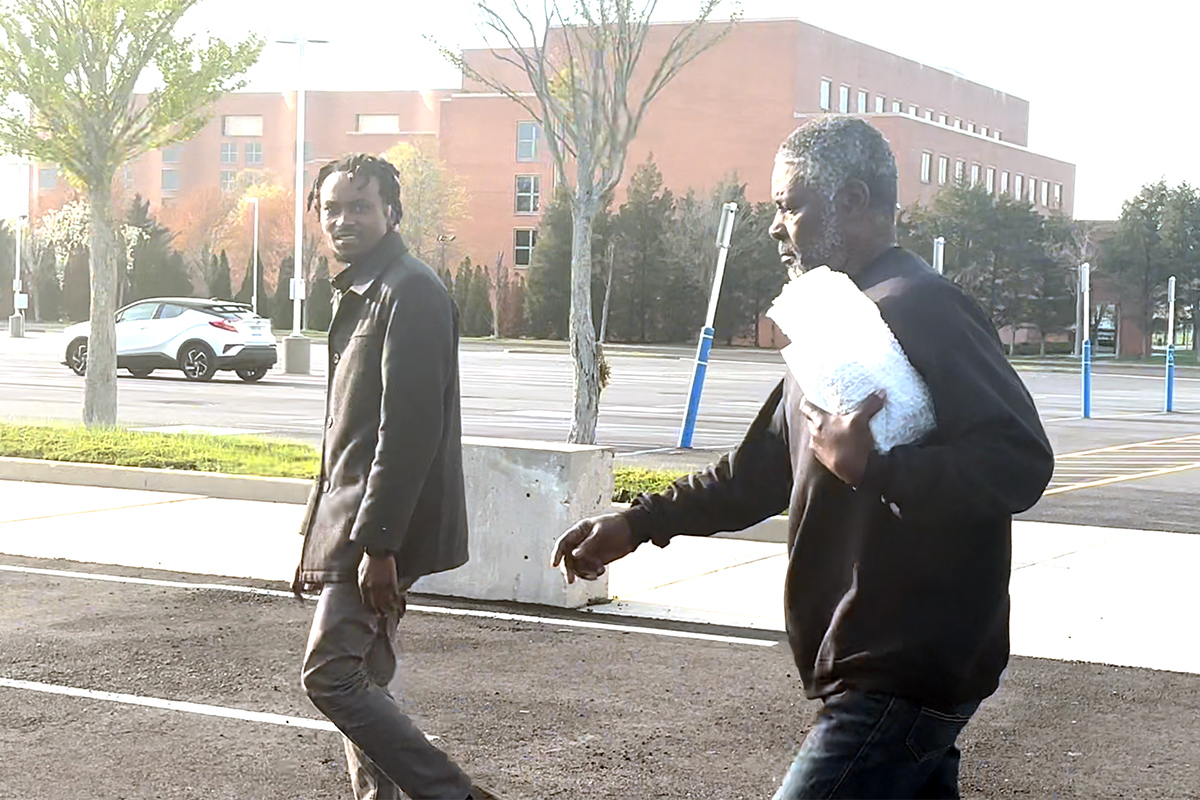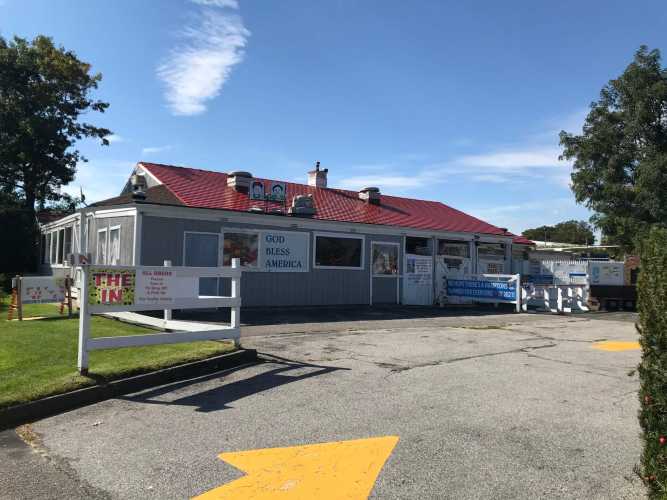The air in Nassau and parts of Suffolk is worse than officials expected as it carries smoke from the raging wildfire in New Jersey.
The New York Department of Environmental Conservation forecasted that the Air Quality Index, or AQI, in Nassau and Suffolk would fall between 101-150, rendering it unhealthy for sensitive groups. However, people across Long Island are currently experiencing far worse, with the AQI in some parts of western Nassau County stopping just short of 200 earlier today. The state DEC deems an AQI of 201 “very unhealthy.”
Currently, southern Nassau is breathing air that falls between 140 and 175, placing it firmly in the unhealthy category. Parts of Suffolk — primarily Lindenhurst, Bay Shore and West Babylon — are subjected to similar conditions, with the AQI reaching 154 in some areas. The unhealthy air quality advisory has also impacted millions in NYC.
The New Jersey wildfire is the biggest seen in decades. As of Thursday, it has burned through around 15,100 acres since igniting on Tuesday and is only 50% contained. A 19-year-old from Ocean County has been charged with aggravated arson for allegedly starting the fire.
For some, the conditions may call to mind the thick smog that descended upon Long Island during the 2023 Canadian wildfires. Even short-term spikes in particle air pollution — which includes air filled with smoke particles — can be “extremely dangerous and even deadly,” according to the American Lung Association. In this respect, the New York metro area has gotten worse since last year, the organization said.
There are things Long Islanders can do to keep themselves safe from potentially hazardous air.
Staying Safe From Unhealthy Air Quality
- Stay indoors. People living close to the fire-stricken areas or in areas impacted by wildfire smoke should remain indoors when possible and avoid breathing smoke, ashes and other pollution in the area.
- Protect the air in your home and car. Keep doors, windows and fireplace dampers shut, preferably with clean indoor air circulating through air conditioners on the recirculation setting. When driving your car in smoky areas, keep your windows and vents closed. Air conditioning should only be operated in the “recirculate” setting.
- Keep an eye on symptoms. Higher levels of smoke in some areas can make breathing more difficult. If you are experiencing wheezing, shortness of breath, difficulty taking a full breath, chest heaviness, lightheadedness, dizziness, a persistent cough or experience difficult or painful breathing, contact your healthcare provider. The first symptoms can appear as late as 24 to 48 hours after initial exposure.
- Take precautions for kids. Extra precaution should be taken for children, who are more susceptible to smoke. Their lungs are still developing and they breathe in more air (and consequently more pollution) for their size than adults. Keep children inside as much as possible, and think about evacuating if they have trouble breathing or symptoms that do not get better.
- Don’t count on a dust mask. Ordinary dust masks, designed to filter out large particles, and cloth facial coverings still allow the more dangerous smaller particles to pass through. Masks with an N-95 or N-100 filter will filter out the damaging fine particles more effectively, although they do not fully protect anyone from harm. It is important to note that masks may not fit properly or work for everyone—they are not made for children, or for adults with facial hair, and are difficult for people with lung disease to use.
- Ask for help. The American Lung Association’s Lung Helpline at 1-800-LUNGUSA is staffed by nurses and respiratory therapists, and is a free resource to answer any questions about the lungs, lung disease and lung health, including how to protect yourself during wildfires and wildfire smoke events.
— American Lung Association





